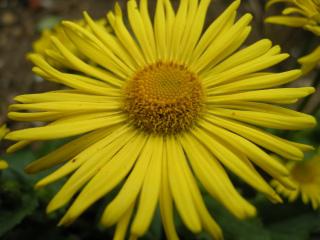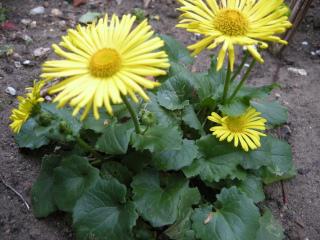Position: Full sun to partial shade

Doronicum 'Little Leo' Flower (o7/04/2012, London)
Flowering period: Spring to early summer
Soil: Moist, well drained
Eventual Height: 30 cm
Eventual Spread: 30 cm
Hardiness: 3a – 9a
Family: Asteraceae
Doronicum orientale ‘Little Leo’ is a low growing, clump forming, herbaceous perennial. Its dark green leaves are cordate with sinuate margins, and are up to 7cm long and 7cm broad. Its golden yellow flowers are daisy like in appearance borne, semi-double, produced on slender stems and up to 8cm across. Its does not bear fruit. It grows and spreads from thickened rhizomes.
The species Doronicum orientale, commonly known as Leopard’s Bane , is native to south east Europe, Turkey to north Syria. Doronicum caucasicum ‘Little Leo’, also known as Doronicum ‘Little Leo’, is synonymous with Doronicum orientale ‘Little Leo’, is commonly known as Little Leo Leopard’s Bane.
The etymological root of the binomial name Doronicum is derived from the Arabic name ‘Doronigi’ or ‘Doronakh’. Orientale is derived from the Latin oriens ‘eastern’

Doronicum 'Little Leo' (07/04/2012, London)
The landscape architect may find Doronicum ‘Little Leo’ useful as a low growing herbaceous perennial, suitable for shady locations. This plant is deer and rabbit resistant. It will go dormant during periods of prolonged periods of dry weather.
Ecologically, D. ‘Little Leo’ is attractive to bees an pollinating insects.
D. ‘Little Leo’ prefers moist, humus rich, well-drained soils. It tolerates most pH of soil, although it prefers acid to neutral soils. It dislikes dry soils.
D. ‘Little Leo’ requires little maintenance. Large clumps may be divided in early spring.

